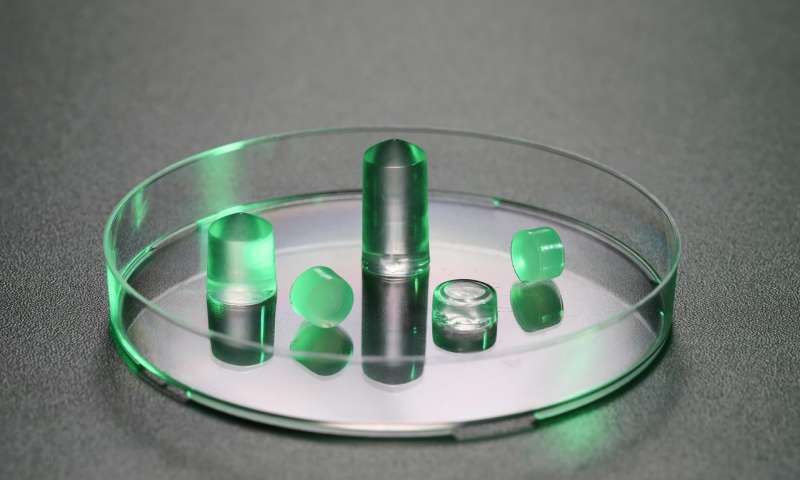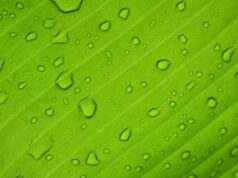EPFL researchers have developed a hydrogel – made up of nearly 90% water – that naturally adheres to soft tissue like cartilage and the meniscus. If the hydrogel carries repair cells, it could help damaged tissue to heal.
Some types of body tissue, like cartilage and meniscus, have little or no blood supply and are unable to heal if damaged. One promising approach to this problem is to inject a hydrogel loaded with repair cells or drugs into the damaged area in the hope of stimulating tissue regeneration.
However, commercial hydrogels do not stay put after being applied to the treatment area because of pressure from the body’s movements and the flow of bodily fluids. Doctors therefore use special membranes to keep the hydrogel in place, yet those membranes are attached with sutures that perforate the very tissue the hydrogel is supposed to heal.
Two EPFL research groups, led by Dominique Pioletti and Pierre-Etienne Bourban, have created a biocompatible hydrogel that naturally adheres to soft tissues like cartilage and the meniscus. Their hydrogel, which is almost 90% water, can withstand mechanical stresses and extensive deformation and therefore eliminates the need for a separate binding process. Their research has been published in ACS Applied Materials & Interfaces.
“Our hydrogel is ten times more adhesive than currently available bioadhesives on the market such as fibrin,” says Pioletti, head of the Laboratory of Biomechanical Orthopedics in EPFL’s School of Engineering. “And thanks to its high water content, our hydrogel is very similar in nature to the natural tissue it’s designed to heal.”
Composite double-network hydrogel
Find your dream job in the space industry. Check our Space Job Board »
The new hydrogel is actually a composite material consisting of a double-network matrix and a fiber network. This structure preserves the material’s strong adhesive capacity by blunting the impact of mechanical stresses. “The double network structure distributes incoming mechanical energy throughout the hydrogel, so that the material shows adhesion improvement when it is compressed or stretched,” says Pioletti. “In hydrogels that lack these damping mechanisms, the mechanical stresses are concentrated on the interface between the hydrogel and the tissue, and the hydrogel comes off quite easily.”
Martin Broome, who heads the Oral and Maxillo-Facial Surgery Department at the University Hospital of Lausanne (CHUV) and is a co-author of the article, is convinced that this type of hydrogel could make a real difference. “If we build on the hydrogel’s remarkable adhesive properties, that could open the door to a large number of potential applications. One day, for example, it might be used in place of metallic materials like titanium to set bone fractures. More immediately, we may no longer need to use complex sutures on some types of soft tissue.”
In its current form, the hydrogel developed at EPFL can adhere to several types of tissue. The next step for the researchers will be to tailor it to specific applications. “Now that our material has demonstrated its superior mechanical properties, we are going to work on loading it with different agents that could help heal a patient’s cartilage or meniscus,” concludes Pioletti.
Provided by:
Ecole Polytechnique Federale de Lausanne
More information:
Peyman Karami et al. Composite Double-Network Hydrogels To Improve Adhesion on Biological Surfaces. ACS Applied Materials & Interfaces (2018). DOI: 10.1021/acsami.8b10735
Image:
Credit: Ecole Polytechnique Federale de Lausanne











